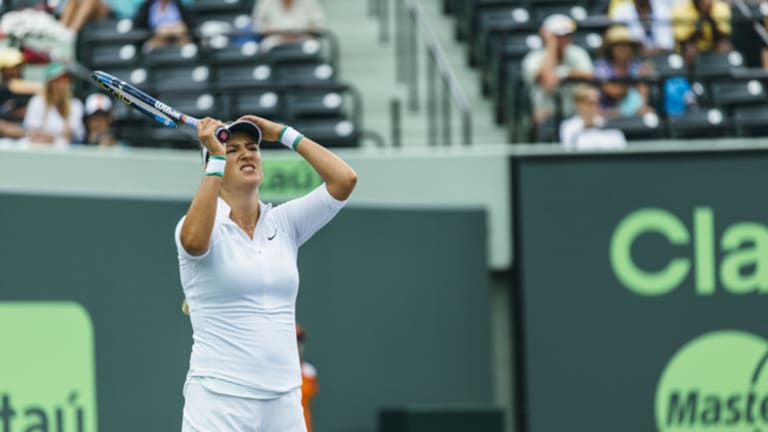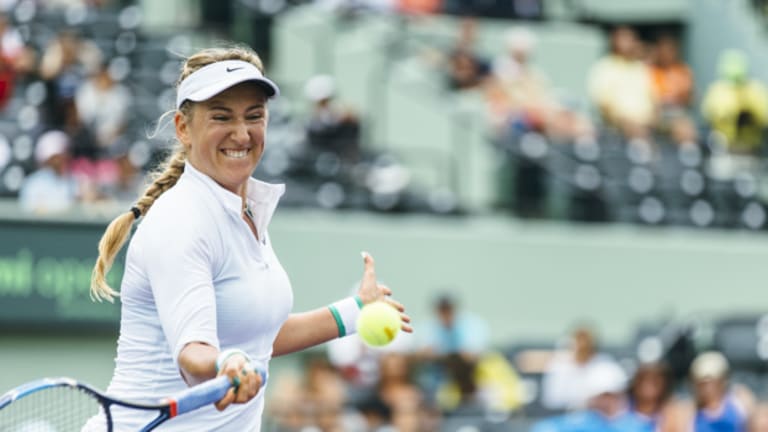“I mean, sometimes I cuss,” Azarenka said afterward, “and that’s OK. I got code violation, but that’s fine. Whatever is going to make me play better I’m going to do. It’s not the best thing to do, but whatever keeps me in the game, keeps me focused. I don’t think I was annoyed [on Wednesday]. I was just trying to push myself.”
Is Azarenka feeling a little more pressure this week than she’s grown accustomed to in recent years? Two weeks ago in Indian Wells, she beat Serena Williams and won her most important title since 2013, back when she was a Grand Slam champion and a world No. 1. Now, after a long trip through the injury wilderness, Azarenka is back in the Top 10, and this week has only brought more promising news. On Monday, Serena was knocked out in the fourth round here, while Azarenka squeaked past Garbiñe Muguruza—the woman who may be her biggest rival to Serena’s throne—in two tiebreakers. After that win, Azarenka said this was a time for excitement rather than anxiety, and that she feels like a superior player at 26 to the one she was when she was No. 1 at 23.
“I think I’m a better player right now, just the way I handle myself on court,” Vika said. “I improved my serve a lot and [I’m] just stronger in the tougher moments ... I think my game is developing with pretty big progress right now, and that’s what I’m most happy about.”
Even after all of her ups and downs, Azarenka remains the most likely woman to take advantage of any slip from Serena, and the most likely to give Serena something she hasn’t had since Justine Henin’s retirement five years ago: a full-fledged rival. This week in Miami, Vika hasn’t backed away from that radical idea.


